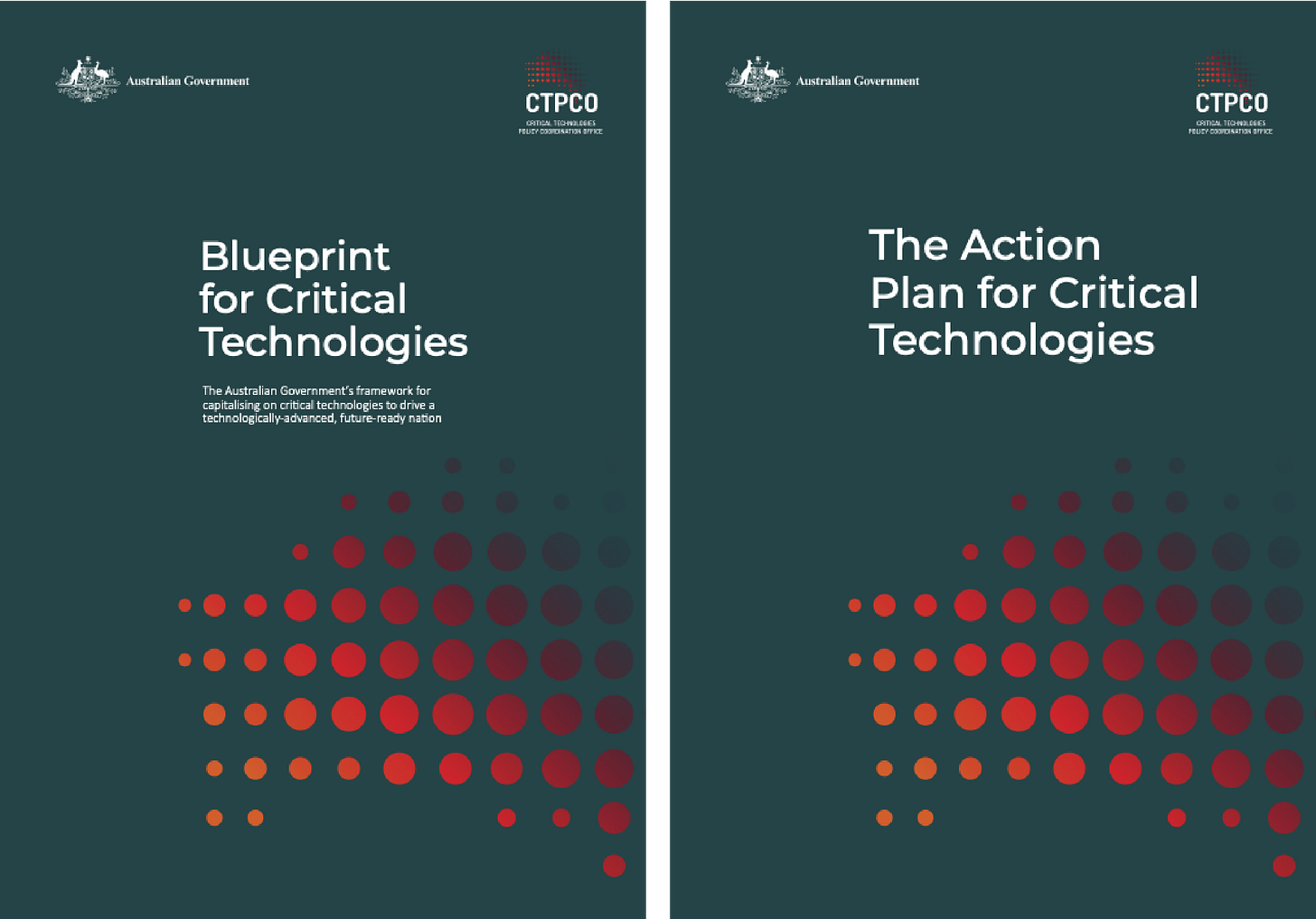In November 2021, the Australian Government released on the same day two related reports that outlined a new framework and strategy for “critical technologies”. Here’s my reading of what’s in those reports and what it means for digitally-focused research and industry.
What are Critical Technologies?
In the two reports, “critical technologies“ are defined as technologies with implications for Australian national interests. In this context, national interest is taken to mean either: national security, economic prosperity, or social cohesion. However, it’s primarily national security and economic prosperity that feature explicitly in the report detail, and with national security the most prominent of those. (The word “security” appears 91 times across the 79 pages in the two reports; “social” only 10 times.)
Critical technologies can be digital, such as AI, as well as physical, such as vaccines. Indeed, the reports have a strong focus on digital, calling out the 2018 Digital Innovation report to CSIRO by technology consultants AlphaBeta that estimated a headline $315 billion value to the Australian economy of digital technologies over the decade leading up to 2028. Whether digital or otherwise, the overall approach to critical technologies is the same: to focus on both associated risks and associated opportunities. Cybersecurity, for example, is associated with clear threats, such as cyber warfare; but also clear economic and strategic opportunities for Australian innovation and leadership.
Blueprint for Critical Technologies
The first report, Blueprint for Critical Technologies, sets out the broad goals and actions that the Government is proposing. There are four goals identified, but they can be summarised as covering two main areas: maintaining choice, supply, and if necessary sovereign capability for critical technologies; and partnering nationally, regionally, and internationally in critical technologies.
The nine action areas that flow from these goals can also be summarised as actions around awareness, education, and training; policies and standards; maintaining supply chains and developing sovereign capabilities; partnerships with industry and other Governments; and direct investments where necessary. There is also a specific focus on cybersecurity and secure communication networks, but a focus that might be a better fit in the second report, the Action Plan for Critical Technologies.
Action Plan for Critical Technologies
The second report identifies 63 Critical Technologies, 24 of which are singled out for initial focus in 9 subgroups. This selection was based on a consultation process in early 2021, shortly after the Critical Technologies Policy Coordination Office who produced the reports was established in mid 2020. Defence Science Technology Group was clearly an important stakeholder in the consultation, as might be expected. However, there is not much more detail about how the “winning” technologies were selected, and for example, which technologies were considered but did not make the cut.
The technologies are classified into seven technology groups, although in a sign of perhaps hurried preparation the report refers to eight categories (Action Plan for Critical Technologies p8). From an information-research perspective, four of the seven technology groupings are strongly digital-technology focused: AI, computing and communications; quantum; PNT (positioning, navigation, and timing) and sensors; and robotics and space. 14 digital technologies from three of these categories appear in the initial focus groups (see below). Perhaps significantly, that initial focus selection includes all of the quantum critical technologies (quantum sensing, computing, communications, and post-quantum cryptography) and none of the PNT and sensors grouping (which for example include satellite positioning, radar, and advanced imaging technologies).

The Action Plan then goes on call out some of the actions the Government is taking to promote critical technologies. The majority of these (5 of 7) are already announced, such as the AI Action Plan and the Civil Space Strategy, and none will come as a surprise.
What does it all mean?
The reports do point some clear directions, with for example quantum clearly signalled as a significant area of investment. However, the lack of depth or new action does in the end leave the reports relatively thin in terms of content. A cynical reading might ask whether the reports would have been released in this form were it not directly before an election year. It is noticeable that photos of Prime Minister Scott Morrison shaking hands or in consultation with world leaders feature highly in the reports graphics. All four images in the report that involve a person looking at the camera include Morrison, with three of those images picturing Morrison with US president Biden, UK Prime Minister Johnson, or Indian Prime Minister Modi. The remaining photos are stock imagery.
So, while I couldn’t quite shake the feeling of reading an election brochure, there are still some useful indicators of potential government priorities here: in particular, a strong emphasis on quantum technologies, and a focus on skills and training and sovereign capability more broadly, beyond the May election.















Share this post